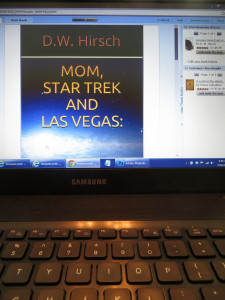With the possible exception of cookbooks, dictionaries and encyclopedias, everything written has some sort of pace to it. From greeting cards to poems to speeches, each piece opens, gives a few high points and then comes to a conclusion. When done correctly, the reader takes no notice of pace. Getting a suspense novel to the point where pace fades into the fabric requires a lot of work. There are two aspects of pacing you will want to consider even before writing the opening scene: your characters’ traits and the conflicts your characters will face. More than anything else, traits and conflicts determine pace because they are the consistent threads throughout your story.
Character Traits.
Your main characters carry the story, so it is their actions that set the pace. Don’t be concerned with what your protagonist looks like at this point, just think of the conduct of your character. Think of how they act. Are they fast talkers? Are they methodical? Compulsive? Arrogant? Do they yearn for approval?
Get to know your characters personally, too. How far did they get in school? Do they have any military service? Are the married? With kids? Pets? Are they religious? What is their career, and how is that going? Any health problem that could slow them down? And, most of all, know their date of birth. All of this stuff determines your character’s psyche, and that determines how they behave. Spend one hour “interviewing” each of your main characters – like a reporter or detective would – and you will prevent a lot of future problems with pace, not to mention character traits. You’ll never use all the material garnered in an interview, but you will write more vivid characters and show truer action because you understand them better. At that point, your characters will tell you how gorgeous their eyes are, how slender their figure is, and all the rest of the eye candy.
Conflict.
The other aspect to consider before starting out is conflict. What has to be conquered to achieve your outcome? In lifelike fiction, you’ll need to consider timelines, material assets and the kinds of professional and emotional help your hero will need to succeed. You can’t have your protagonist globe-hopping conflict-to-conflict without allowing for enough time for him or her to get from hop-to-hop. The same can be said for how long it takes to build a boat out birch bark or to give birth to a baby. Lifelike fiction reads like it could really happen. Fantasy fiction, like Ian Fleming’s Agent 007, allows the author to play with things like timelines and history, facts and follies. So, for example, when Mr. Bond is dining in London at 10:00 p.m. and playing roulette in Monte Carlo at midnight – a distance of 641 miles – it does not take us out of the story. Fleming pulls this off because his character is immortal, but in mortal-drawn fiction, we have to pace ourselves to the dual drums of time and nature.
Opening scene.
Once you know you main characters and understand the obstacles they have to overcome, then you can write the opening scene. This sets the pace of your story. If you want to forecast fast and furious, then open with a tightly drawn scene that presents your protagonist already in peril. Show him witnessing a crime and then exit the scene with your character hastily being pursued by the bad guys.
However, if your story is going to evolve over several months or longer, you will want to open instead with a character-building scene, like a dinner with hubby, wife and family before he flies off to meet his fate. Then, when the lights go out in Scene Two, we care what happens to him. You’re pace is set.
In the first approach, you’re broadcasting to the reader, Hold on, this is gonna be some ride! With the second approach, you’re saying, Here’s someone you’re gonna like. Or dislike, if you choose to open on the antagonist. The difference is compelling.
Word choice.
As far as word count is concerned, the faster the pace, the shorter the sentences. If you want to broadcast a slower pace, then use more commas, and longer, compounded sentences, so you have to use even more commas. Really, it’s that simple.
Action should be consumed in small bites, but tension-building descriptions and internal reflections that lead up to the action scene should be drawn-out affairs. Action sprints across the page, and like a sprint it should be over in no time. Tension uncoils like a spring. That doesn’t mean the entire scene is completed in one or two paragraphs. It means the action is shattered into shards of short, breath-taking bits, and the tense descriptions into nail-biting disquiet.
In fast-paced scenes, use descriptive words by their first reference only, not their second or third meaning. Use words that are easily understood, or words that play on a previous scene or trait. Stick with simple character tags of he said and she said so as not to slow down the pace. Find the fewest words possible to keep the action moving.
Pause scenes.
Another strong consideration should be the pause button. After an action scene, give your readers a break. Use this time for your characters to reflect on what just happened; they need a break, too. Use this space to have them discuss how that last action scene changes what they need to do next. Pause scenes are excellent places for foreshadowing.
Read it out loud.
“Read your piece loud enough for the folks in the back of the room to hear you.” That’s the best advice I ever received involving pacing. If you read it in the same tone your character speaks, you’ll hear the cadence in their voice, too, as well as the meaning of the words. Does this “sound” like this character? You’ll pick up on idiosyncrasies like back-to-back tongue-twisting words, unnecessary adverbs or adjectives, and weak or overstated nouns. Reading aloud forces you to enunciate every word and hear every syllable through your outer ear. That shows you – the writer – what it sounds like to the reader’s inner ear. Now have someone else read it to you. Close your eyes and imagine that you’re someone who just bought this book and is hearing this for the first time. Did they stumble? Did they emphasize the right parts? Did your inferences come across? Does it sound like the same one you wrote? That’s the acid test!
Follow your plot line by alternating between action scenes and pauses. Sometimes, because of timelines and whatnot, one action scene will need to get dumped right on top of the last, or a longer pause will be needed to allow for time to catch up to your next scene. These deviations in pace need to be written with tender, loving care. You’re asking your reader to change cadence from the pace you set in the beginning. Where this does happen in your novel, try to connect the change in pace with a common thread or theme, to give it a pace of its own. Done correctly, your readers won’t even notice, but write it haphazardly and folks are going to trip up.
Subplots work nicely for pause scenes, especially in longer stories, providing they conclude with your story’s ending. Subplots need their own satisfying ending, too, so you’re effectively telling two stories at this point. Subplots need to be fully fleshed out and relevant to your main story. Subplots don’t need to be action-packed, but they do need to develop “in character” and in a timeline with your main plot. Ironically, the best subplots give rise and reason for dramatic character changes. Give subplots a lot of forethought because they are not easy to do well. Subplots not only take the reader out of the main story, but you as well, and a poorly developed subplot will only bog you down when you want to be at your most creative. And remember: What you put in your story, you must take out.
Next month: Plotting.
When Founding Father Ben Franklin famously said, “We must, indeed, all hang together, or assuredly we shall all hang separately,” he could have been talking about the fate of a story’s plot line instead of the fate of new nation. Plotting is a game that fiction writers play while conjuring up good ideas for their story. We’re the only genre of writers that plays What if…?
Changes throughout your story are the plot line’s development. And, like an architect’s set of detailed drawings, your plot line must conclude with a full rendering of your House of Cards if you expect anyone to buy it. Next month, we’ll look at how a plot line “hangs together.”

